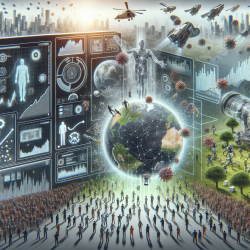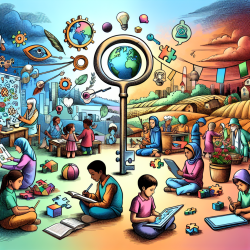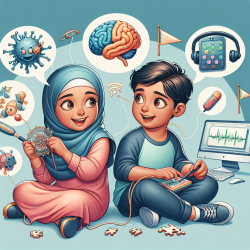Introduction
The COVID-19 pandemic has profoundly impacted various aspects of human life, including public health, mobility, and air quality. The study titled "Machine Learning on the COVID-19 Pandemic, Human Mobility and Air Quality: A Review" explores the interplay between these factors using machine learning (ML) techniques. This blog aims to provide insights into how practitioners can improve their skills by implementing the outcomes of this research or by encouraging further exploration.
The Power of Machine Learning in Pandemic Response
Machine learning has emerged as a powerful tool in handling complex problems such as the COVID-19 pandemic. By analyzing large datasets, ML can uncover hidden patterns and predict outcomes with high accuracy. This capability is particularly useful in understanding the interactions between the pandemic, human mobility, and air quality.
Key Findings from the Research
- Impact on Mobility: The pandemic significantly altered human mobility patterns, with many people opting for private transportation over public transit to reduce infection risk. ML models have been used to predict these changes and assess their impact on urban transportation systems.
- Improvement in Air Quality: Lockdown measures led to a noticeable improvement in air quality, with reductions in pollutants such as NO2 and PM2.5. ML techniques have been instrumental in quantifying these changes and understanding their implications for public health.
- Spatio-temporal Analysis: The study highlights the importance of spatio-temporal analysis in understanding the spread of COVID-19 and its impact on mobility and air quality. By leveraging ML, researchers can provide valuable insights for policymakers to implement timely interventions.
Implications for Practitioners
Practitioners in the fields of public health, urban planning, and environmental science can benefit from the findings of this research. By integrating ML techniques into their work, they can enhance their ability to predict and respond to pandemics, improve urban mobility, and promote better air quality.
Encouraging Further Research
The study underscores the need for ongoing research to refine ML models and expand their applications. Practitioners are encouraged to explore new data sources, incorporate additional variables, and collaborate across disciplines to advance the field further.
To read the original research paper, please follow this link: Machine Learning on the COVID-19 Pandemic, Human Mobility and Air Quality: A Review










